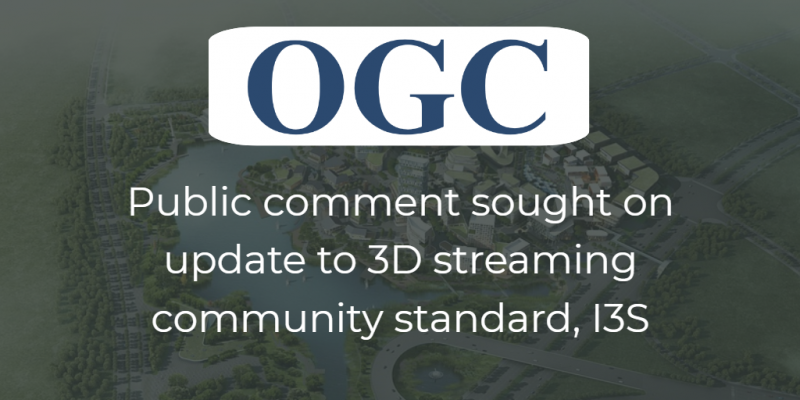Latest version of I3S standard, used for streaming large 3D datasets, adds Point Cloud Scene Layer type, improved performance, and more.

The Open Geospatial Consortium (OGC) seeks public comment on v1.1 of the candidate OGC Community Standard Indexed 3d Scene Layer (I3S) and Scene Layer Package Format Specification. I3S v1.0 was approved as an OGC Community standard in 2017 Since then new features have been developed and implemented by the I3S community. The candidate Community Standard was submitted by Esri.
I3S is used to stream large three-dimensional (3D) datasets and is designed for performance and scalability. I3S supports 3D geospatial content as well as the requisite coordinate reference systems and height models in conjunction with a rich set of layer types. I3S is designed to be cloud, web, and mobile friendly, and is based on modern web standards.
A single I3S dataset, referred to as a Scene Layer, is a container for arbitrarily large amounts of heterogeneously distributed 3D geographic data. Scene Layers are designed to be used in mobile, desktop, and server-based workflows and can be accessed over the web or as local files.
The delivery format and persistence model for Scene Layers, referred to as Indexed 3d Scene Layer (I3S) and Scene Layer Package (SLPK) respectively, are specified in detail in the OGC Community Standard now available for public review and comment.
The changes included in v1.1 of the OGC I3S Community Standard include:
- Addition of the Point Cloud Scene Layer (PCSL) type. A PCSL is designed to quickly display large volumes of symbolized and filtered point cloud data. A PCSL is scalable similar to Mesh-Pyramids and Point profiles that are currently supported in I3S V1.0. A PCSL relies on principles of bounding volume driven tree hierarchy, to organize a multi-LOD (Level of Detail) representation of the point cloud data structure. This in turn, allows for a quick discovery and selection of the appropriate LOD by a client application, whether its consumed on a mobile, web, or desktop platform.
- For existing layer types, the addition of: Oriented Bounding Boxes; Attribute Domain Rules; Service Update Timestamp, and; Index hash table for improved performance.
- Numerous editorial updates/corrections to improve readability.
The candidate I3S Community Standard is available for review and comment on the OGC Portal. Comments are due by the 7th of November, 2019, and should be submitted via the method outlined on the I3S Community Standard's request page.
About OGC
The Open Geospatial Consortium (OGC) is an international consortium of more than 530 businesses, government agencies, research organizations, and universities driven to make geospatial (location) information and services FAIR – Findable, Accessible, Interoperable, and Reusable.
OGC's member-driven consensus process creates royalty free, publicly available geospatial standards. Existing at the cutting edge, OGC actively analyzes and anticipates emerging tech trends, and runs an agile, collaborative Research and Development (R&D) lab that builds and tests innovative prototype solutions to members' use cases.
OGC members together form a global forum of experts and communities that use location to connect people with technology and improve decision-making at all levels. OGC is committed to creating a sustainable future for us, our children, and future generations.
Visit ogc.org for more info on our work.
“
